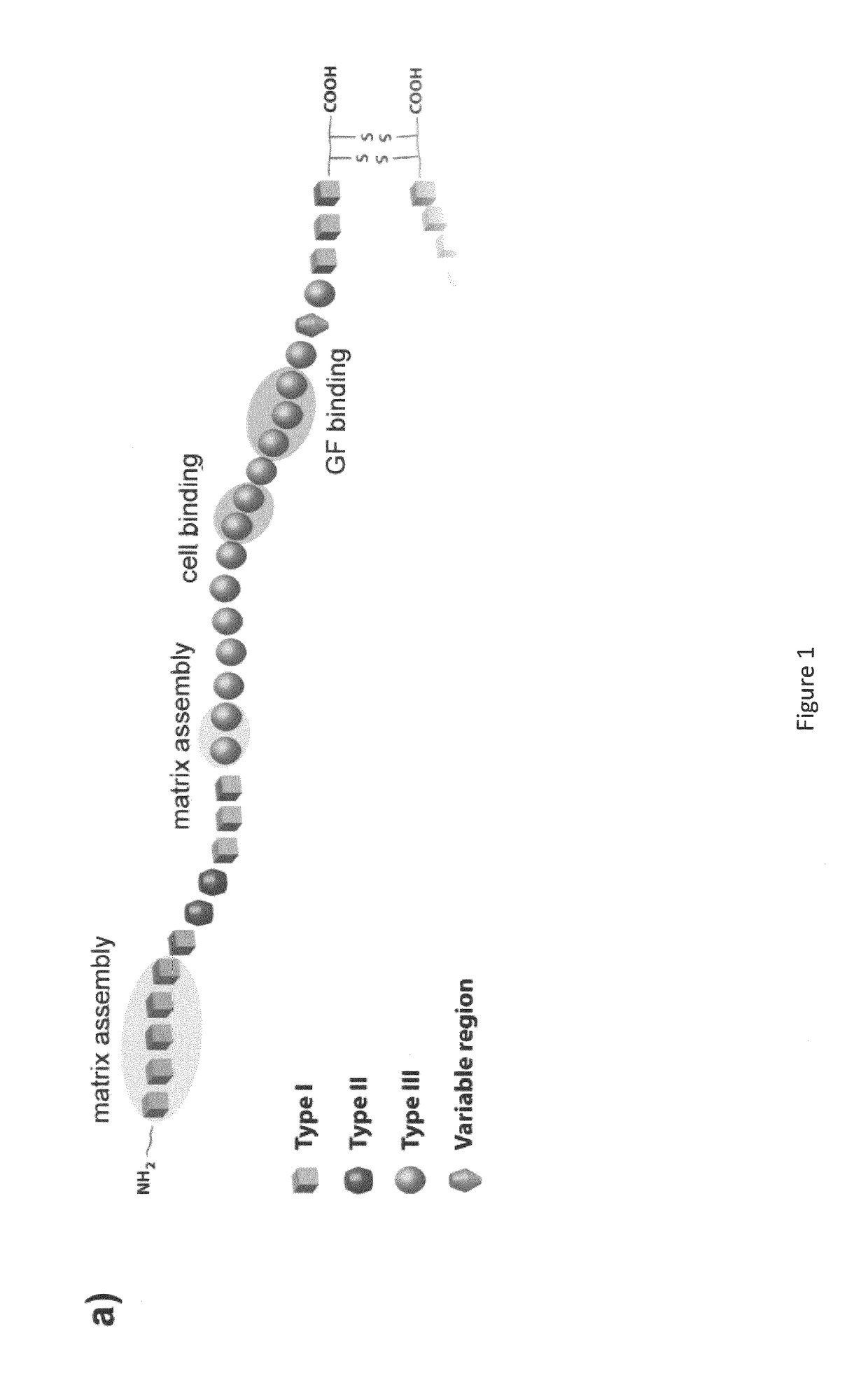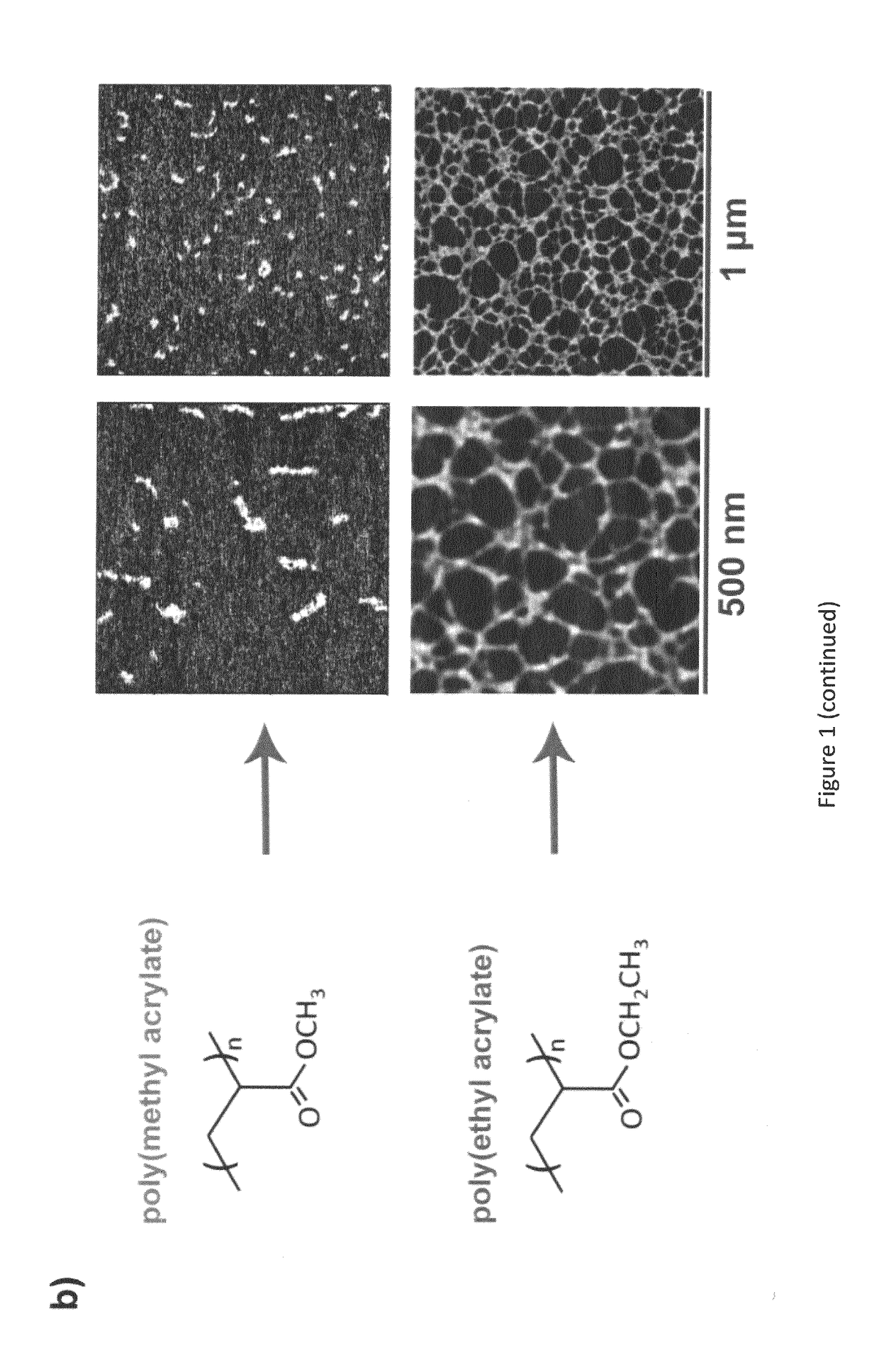Materials And Methods For Tissue Regeneration
a tissue regeneration and material technology, applied in the field of materials, can solve the problems of complex engineering of systems to maximize gf activity, and achieve the effect of enhancing cell growth, proliferation and/or differentiation
- Summary
- Abstract
- Description
- Claims
- Application Information
AI Technical Summary
Benefits of technology
Problems solved by technology
Method used
Image
Examples
Embodiment Construction
[0315]Cell Culture Surfaces with BMP-2 to Control Stem Cell Differentiations
[0316]Here we report, for the first time, a simple, robust and translational material-based approach to present BMP-2 in combination with the integrin binding domain of fibronectin (FN). This strategy is based on the self-organization of FN into (nano)networks at the material interface upon adsorption on poly(ethyl acrylate) (PEA) and exploiting this nanofibrillar matrix to capture and present BMP-2. This approach unlocks the potential for artificial synergistic signalling using chemistries that can be applied to large areas of complex (2D and 3D) biomaterial scaffolds. We examined the effects of these surfaces on human mesenchymal stem cells (MSCs) as a clinically-relevant stem cell type and demonstrate that our simple approach can influence cell adhesion through colocalisation of FN and BMP-2 which synergistically drives integrin-GF receptor signalling and ultimately directs stem cell differentiation.
Mater...
PUM
| Property | Measurement | Unit |
|---|---|---|
| concentration | aaaaa | aaaaa |
| size | aaaaa | aaaaa |
| glass transition temperature | aaaaa | aaaaa |
Abstract
Description
Claims
Application Information
 Login to View More
Login to View More - R&D
- Intellectual Property
- Life Sciences
- Materials
- Tech Scout
- Unparalleled Data Quality
- Higher Quality Content
- 60% Fewer Hallucinations
Browse by: Latest US Patents, China's latest patents, Technical Efficacy Thesaurus, Application Domain, Technology Topic, Popular Technical Reports.
© 2025 PatSnap. All rights reserved.Legal|Privacy policy|Modern Slavery Act Transparency Statement|Sitemap|About US| Contact US: help@patsnap.com



